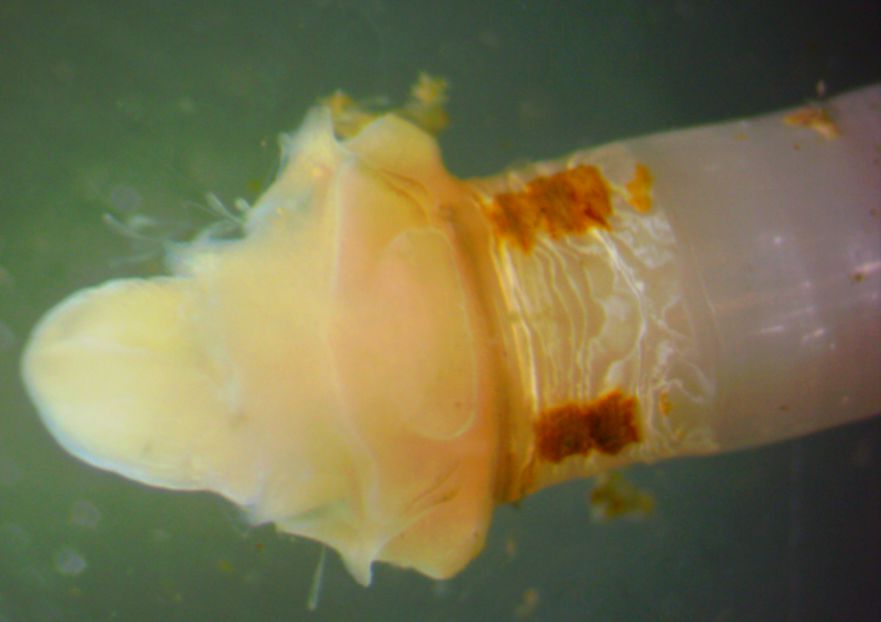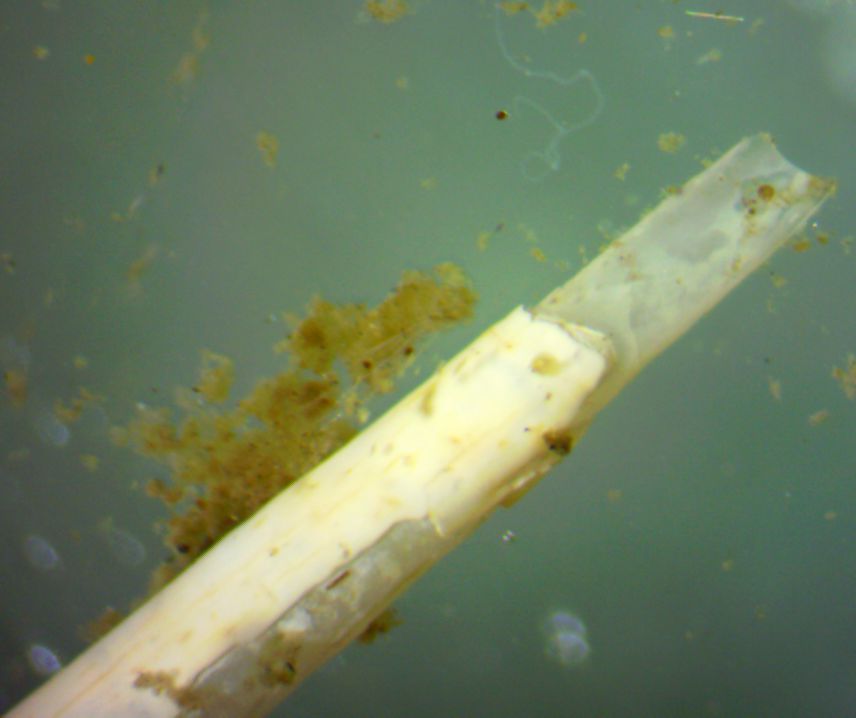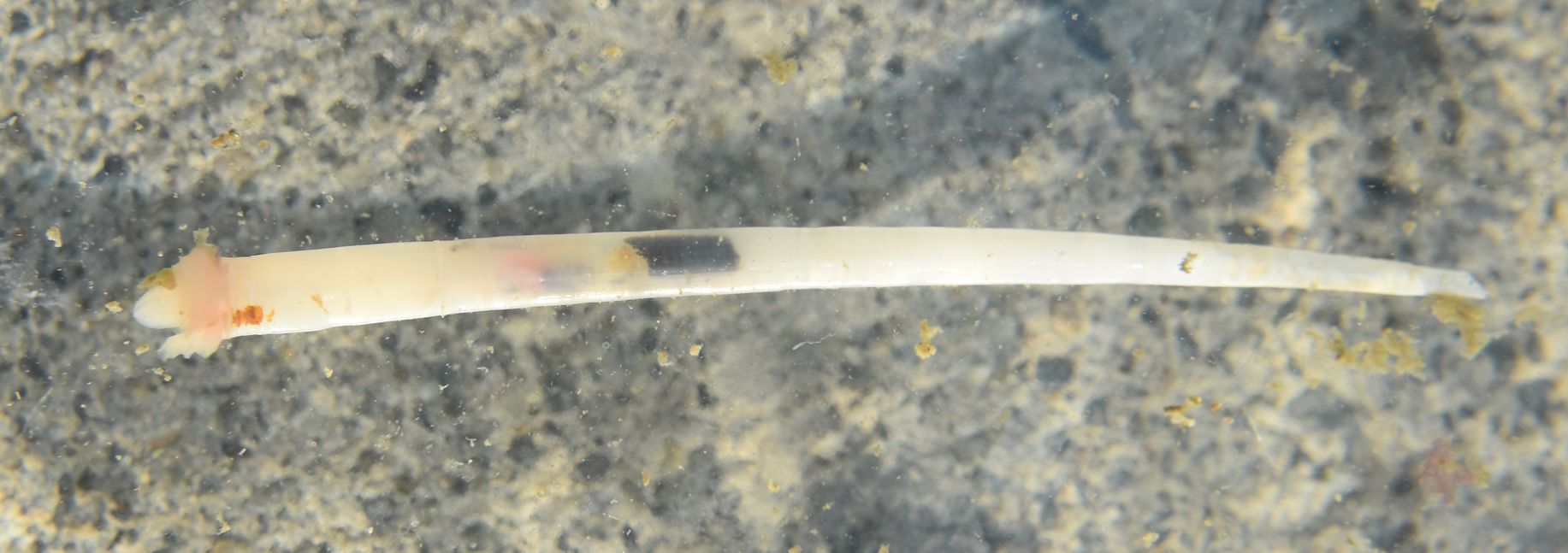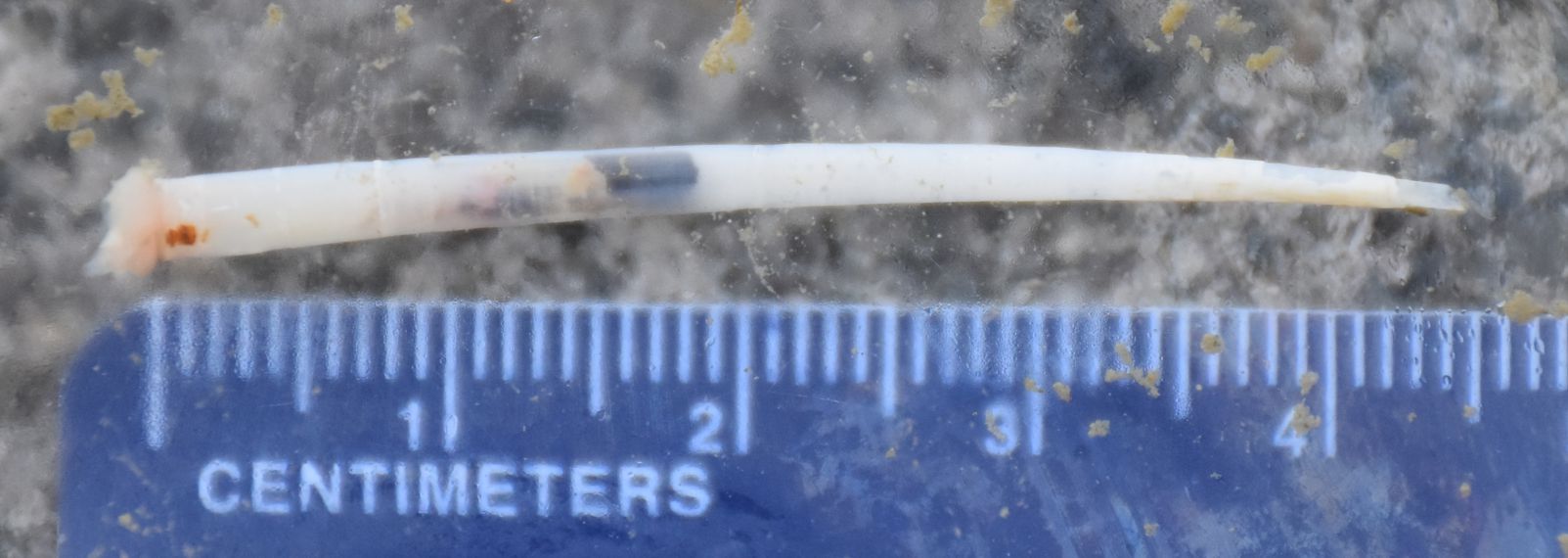Description: Shell smooth, fragile, usually greater than 2 cm long; without a narrow slit extending from the narrow (posterior) end. Foot conical. The testis of the male is white and the ovary of the female is yellow, visible through the thin shell. Length to 13 cm, diameter to 6 mm.
How to Distinguish from Similar Species:Dentalium agassizi has fine ribs or lines on the shell. Antalis. pretiosum has a thicker shell and a narrow slit extending from the posterior aperture, plus it lives in shelly hash/gravel. Most other species are < 2 cm long and have a wormlike foot.
Geographical Range: Alaska to Peru
Depth Range: Nearly always subtidal.
Habitat: Mud, silt, or sand
Biology/Natural History: Scaphopods are small, predatory mollusks which live within the sediment with the anterior (large) end of their shell down into the sediment and the posterior (small) end of the shell also buried or occasionally exposed at the surface. The shell curves, with the dorsal side concave. Members of Order Dentaliida have the largest diameter of the shell at the anterior end, while the other order (Gadilida) is widest somewhat back from the anterior end. The foot extends from the anterior end, or can be folded back into the shell. It has a pair of lateral lobes just behind the front of the foot, leading to the name Scaphopoda which means 'plow-foot'. They extend their foot into the sediment, then extend 'captacula' (club-ended feeding tentacles) to the sediment near the foot to capture prey such as foraminiferans (movie). Rhabdus rectius also eats the sediment and fecal pellets.
Predators include fish and crabs. Sexes are separate, and a single egg is laid at a time.
Empty tusk shells sometimes wash up on the beach. Some
Vancouver Island
Indians dredged them up, especially the thicker-shelled Antalis
(formerly Dentalium) pretiosum, with wooden rakes from
shallow water,
strung them on leather strings, and used them for money or
ornamentation.
| Return to: | |||
| Main Page | Alphabetic Index | Systematic Index | Glossary |
References:
Dichotomous Keys:Carlton, 2007
Kozloff, 1987, 1996 (as Dentalium rectius)
General References:
Harbo,
1997
Lamb
and Hanby, 2005
Scientific Articles:
Gainey, L.F., Jr., 1972. The use of the foot and the captacula in the feeding in Dentalium. Veliger 15: pp 29-34
Shimek, R.L., 1998. Scaphopoda. In: Taxonomic atlas of the benthic fauna of the Santa Maria Basin and Western Santa Barbara Channel, Vol. 9: Mollusca. J.A. Blake, A.L. Lissner, and P.H. Scott, editors. Santa Barbara Natural History Museum, Santa Barbara, CA.
Web sites:
General Notes and Observations: Locations, abundances, unusual behaviors:

The anterior end, with the foot protruding. The shelf behind the tip
of the foot is partly visible, as are several of the captacula
tentacles.
You can view a video of the captacula tentacles moving here.
Photo by Dave Cowles, August 2017

The posterior end, at the same magnification as the anterior end. Note
that most of the shell is fragile. There is a white concretion on a
portion
of the shell visible here.

Another view of the whole animal. Since I see no prominent yellow
organs
inside the shell, I presume that this is a male.
Authors and Editors
of Page:
Dave Cowles (2017): Created original page
CSS coding for page developed by Jonathan Cowles
Salish Sea Invertebrates web site provided courtesy of Walla
Walla University
